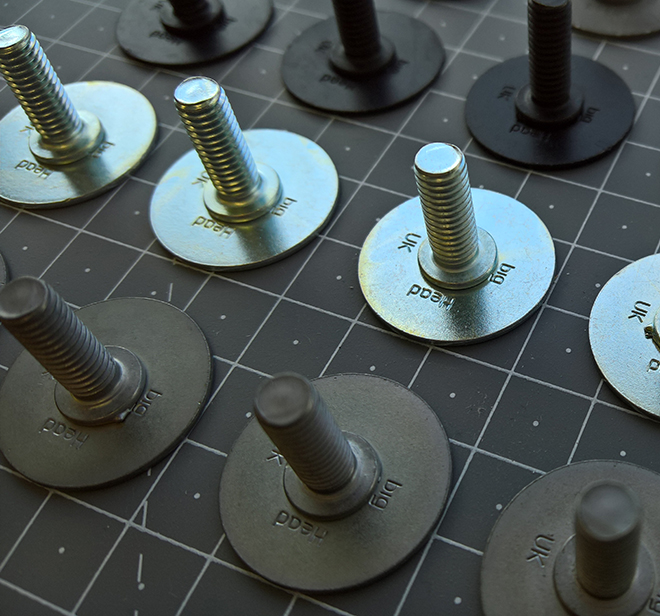

News & insight

Adhesive bonding and anti-corrosion coatings

Applying anti corrosion coatings, plating or other treatments to bigHead fasteners means that one is no longer working with a steel substrate for the purposes of adhesive bonding. Whilst a selected adhesive may be excellent for bonding steel, it may not be so compatible with different coatings or treatments. Sometimes the coating or treatment itself can also be an issue, especially if it is susceptible to failure or detachment at loads that one would typically expect the adhesively bonded fastener to withstand.
Nobody likes to see adhesively bonded fasteners falling off unexpectedly. When it comes to anti corrosion coatings, at bigHead we explored the compatibility between different adhesive systems and different coatings and treatments. We did this by preparing test specimens and mechanically testing them. We began by supporting student projects at Cranfield University, which grew into a Knowledge Transfer Partnership (KTP). We now have our own bigHead testing laboratory for doing this work. The testing and evaluation helped us identify potential lack of adhesion, cure inhibition issues, or coating detachment issues – some of which are undetectable by visual examination alone. With this information, we can help our customers and clients decide on the right fastener coating or treatment for a given application.
Working with bigHead means customers and partners have access to information and expertise that helps them avoid issues from the outset, saving them time and money on selection and testing. As new products and combinations arise, we can carry out testing to provide definitive answers; saving our customers and partners the need to do this. We even share examples of things to look out for on our TecHub, so that everyone can be aware of the key issues. The great benefit to all this? Safety and reliability for everyone by minimising the chance of fastening failure due to adhesive and coating incompatibility.
